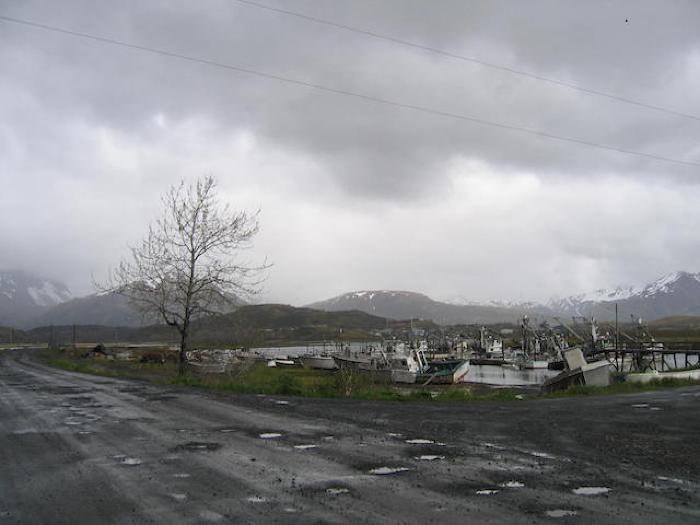Rain — Qiteq

From September to April, a winter storm crosses the Gulf of Alaska about every five days, bringing intense rain, high winds, and heavy seas. Surrounded by the ocean and encircled by Alaska’s high coastal mountains, Kodiak is continually exposed to the full force of these storms. The archipelago receives about 79 inches of precipitation annually and has more than one hundred wet days. Most of this precipitation, about ninety percent, falls as rain.
Alutiiq people have always adapted their practices to this soggy environment. Hunters, travelers, and people working outdoors once wore waterproof garments stitched from the intestines of sea mammals and bears. These flexible, lightweight coats were easy to work in and kept the wearer very dry. Houses were also built to keep out the rain. A thick cover of thatch and sod over a wooden frame helped to shed winter’s constant drizzle. Archaeological data, however, suggest that water did eventually seep into sod dwellings, particularly through their earthen floors. To combat this seepage, Alutiiq ancestors constructed drainage ditches to direct water away from living areas. Homebuilders lined and covered these trenches with boards, forming a network of channels below the floor.
Rain also influences subsistence activities, because it can affect the harvesting and processing of resources. Even today, people tend not to pick plant foods in the rain. Heavy rain makes berries watery, and wet vegetables are difficult to preserve. Similarly, fair weather is necessary to dry the quantities of salmon and halibut that people eat all winter long. Too much rain and fish flesh will fail to dry and will spoil.
